Outdoor Pools

Indoor pools and outdoor swimming pools share many common areas. Although relatively simple and inexpensive to build, outdoor pools can be big energy consumers. Many pool owners spend a small fortune annually to heat outdoor pools. Much of this energy is often wasted and can be saved with proper design.
The design considerations should also include measure to minimise the risk of damage due to frost when the pool is winterised and also factor in methods to enable the drainage of vulnerable plant, again to minimise damage in the winter months.
The surround materials also need to be considered carefully. Dark materials can be inpossible to walk on in the hot summer months and lighter materials can create unpleasant glare.

Slip resistance materials are obviously very important but if you get this wrong there are retrospective coatings that offer improved slip- resistance.
Outdoor pools also require a slightly different approach to indoor pools. Excess water from rain needs to be dealt with especially with a vinyl fabric cover which will hold water above and below. The normal wind direction should influence the location of skimmers and the direction that water inlets face. Location of trees and the shedding of leaves all need to be factored into the system design.
Current regulations do not require the installation of pool insulation but the reduction in warm up times may warrant this expense especially if there is a high and moving local water table.

Heat pumps offer heating using “free” energy. If that sounds too good to be true then read on. In good weather a heat pump can provide 5 kw of heat to the pool water, whilst consuming only 1 kw of electricity. It is not magic! The heat pump simply uses the electricity to extract 4kw of heat from the air and combines that with the 1kw of electricity to provide 5 kw of water heating. Where natural gas is not available then heat pumps are almost always going to be the cheapest heating option.
That does assume enough spare electrical supply is available and heat pumps normally have an initial “surge” that can cause “marginal” electrical supplies to dip and cause local light dimming!

Outdoor pools are more difficult to secure than an indoor pool with locking doors and windows. This means that installing a cover for safety can be as important as the massive energy savings they offer. Protecting your pets, children and even the wandering toddler from next door is an important issue and safety covers with edges tied into the pool structure may be an important part of your peace of mind. Alarm systems are also available that warn when something has landed in the pool.
Outdoor pools are clearly more vulnerable to dirt and debris and using a cover that is more sealed is a wise investment to reduce maintenance and chemical requirements.
Indoor Pools
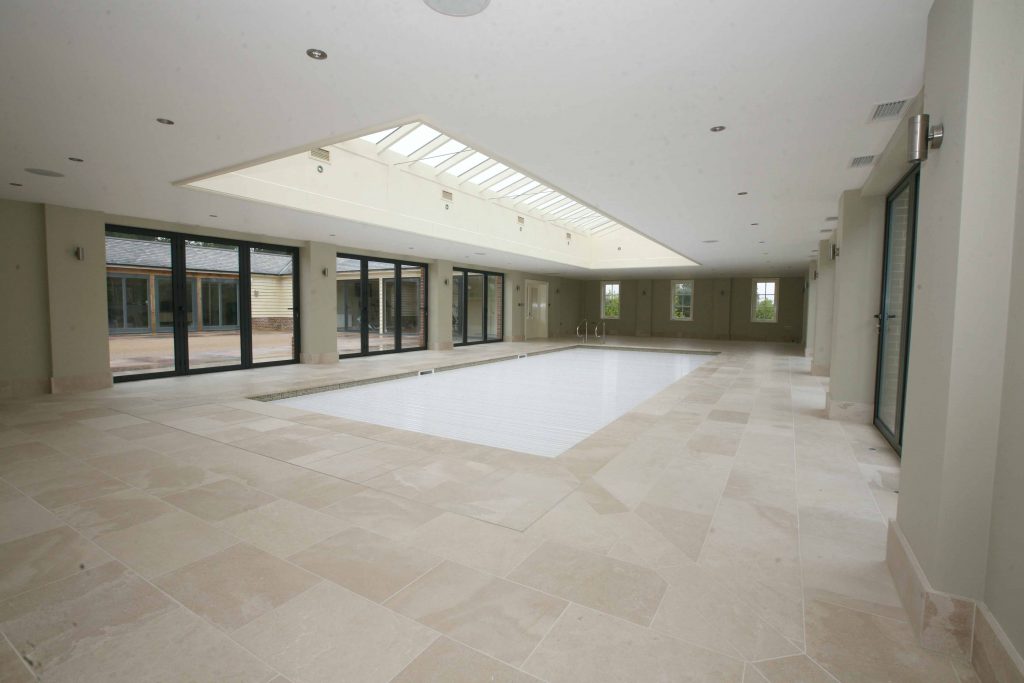
There are a number of adjustments that the pool designer needs to make when he is considering indoor pools, rather than an outdoor pool. An indoor pool is likely to be heated all year long but the water heating requirement is likely to be much smaller. The structure of an indoor pool tank must be insulated to comply with the 2010 edition of the building regulations. Surprisingly perhaps outdoor pools do not fall under these regulations as yet and so there is no obligation to insulate an outdoor pool.
The indoor pool environment will condense in normal circumstances on any surface cooler than around 21°C. It is not just the pool engineers responsibility to ensure this does not occur. The architect and builder of the structure housing the pool need to ensure it is suitable and an experienced pool designer will be a valuable part of the design team ensuring all aspects are considered.
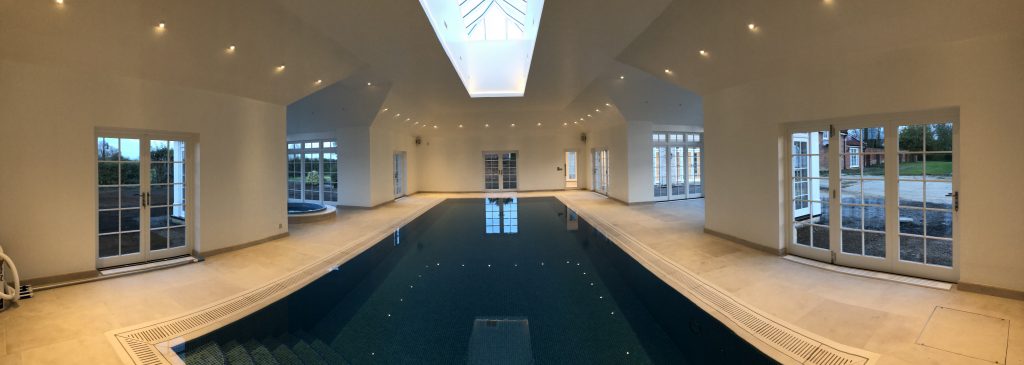
Outdoor pools are not normally heated 12 months of the year so a device like a heat pump, which works well in warm weather, may not work so well for indoor pools where the heating will be required in the depths of winter. The heating of an indoor pool also needs to control the air temperature as well as the water temperature. This will ensure that the room remains comfortable to swimmers and also provides some protection against condensation.

Condensation risks in indoor pools are normally reduced by installing a dehumidification system. This will reduce the level of relative humidity in the room and dried and heated air will be distributed around the pool room. The air supplies will normally be directed onto windows and other cold features. It is the architect and builder’s responsibility to ensure that the building is insulated correctly and has vapour control, membranes. Aqualia’s engineers become involved at the earliest stages possible to advice on these issues.

When installing an indoor pool system it is natural for the design team to be considering the adjacent areas such as changing rooms, games rooms and gymnasia. With a qualified Building Services Engineer on Aqualia’s team it makes sense for us to integrate the plant for the pool heating with underfloor heating and hot water storage for showers and wash hand basins etc.
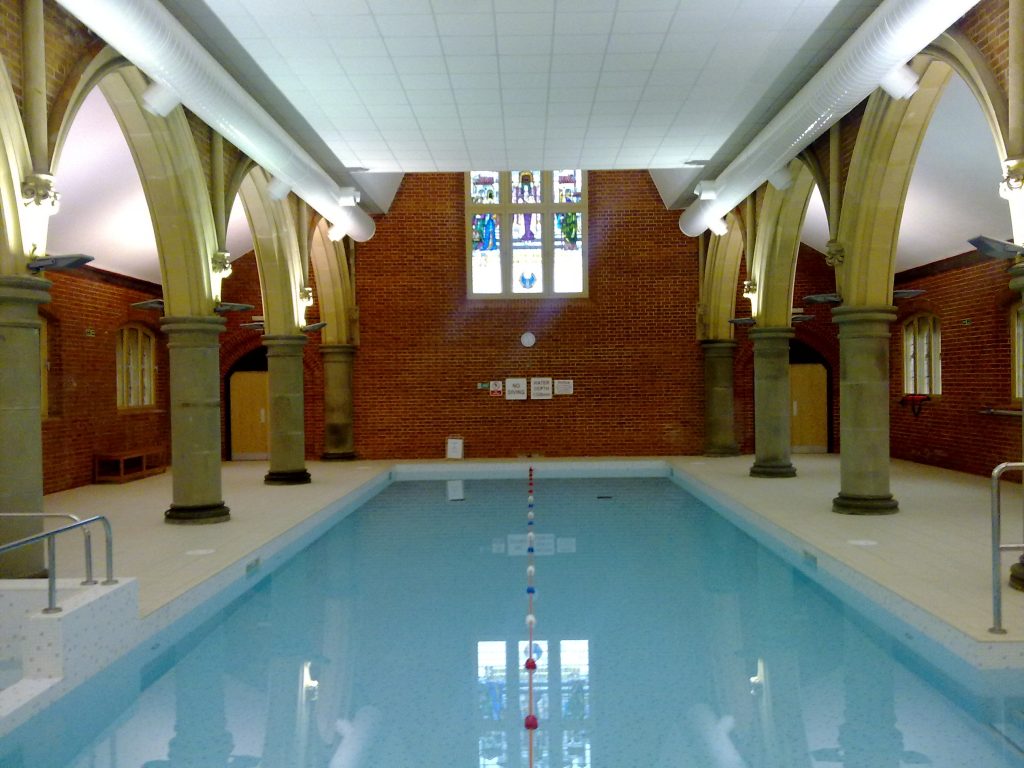
Amongst the pool related design issues will be the size of pool to provide the use you require. Access into the pool can be via integral tiled steps or stainless steel grab rails and ladders can be chosen to save valuable swimming space.
Where space is limited for an exercise pool then a counter swim or fast lane unit may overcome the space issues. These powerful devices allow you to swim into a powerful jet of water thereby dispensing with the need to constantly turn at each end of the pool. Care is needed where the customer is a very strong swimmer because some schemes may not be powerful enough.
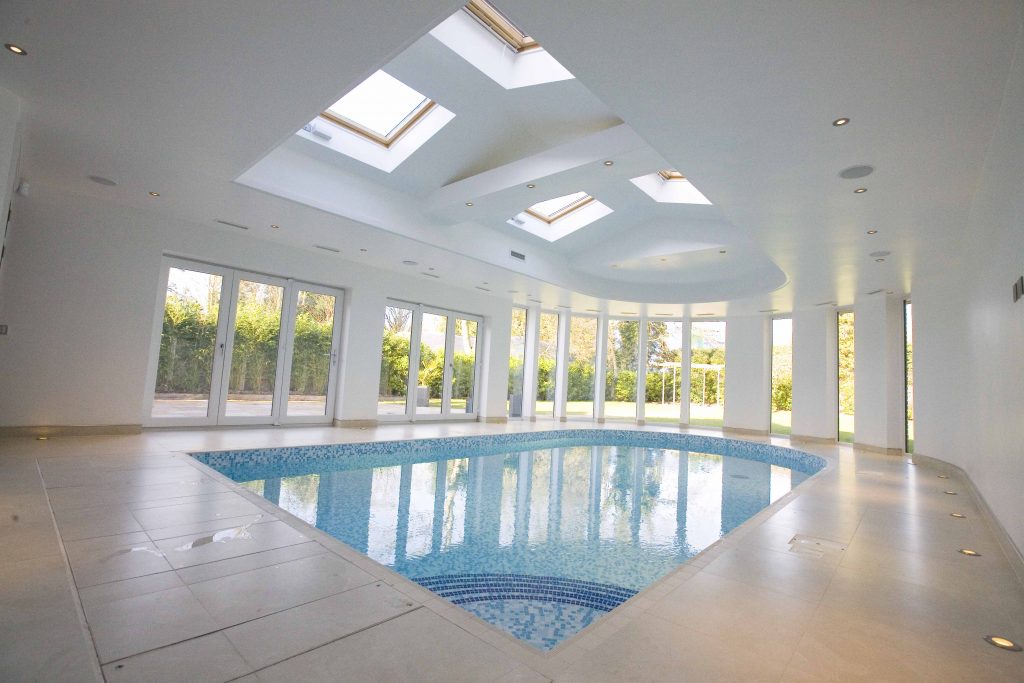
The dehumidification scheme is designed to control surface condensation to an absolute minimum. EPS can also help and advise your architectural team to ensure that the more destructive “interstitial” condensation does not occur due to poor building design and detailing.
Rooflights are wonderful for bringing natural light flooding into the pool room. However glass tends to be the coldest surface in the room in the winter so a flow of warm dry air is important.
Just as important is the frame and the kerb that the rooflight is mounted on and this must also be thermally broken.

Aqualia’s engineers have even designed and built commercial pools that are a mixture of indoor and outdoor pools with a controlled opening allowing swimmers to pass between the two areas. Care needs to be taken to ensure the filtration accounts for the extra debris that the outdoor section will introduce to the indoor filtration skimmers and components.
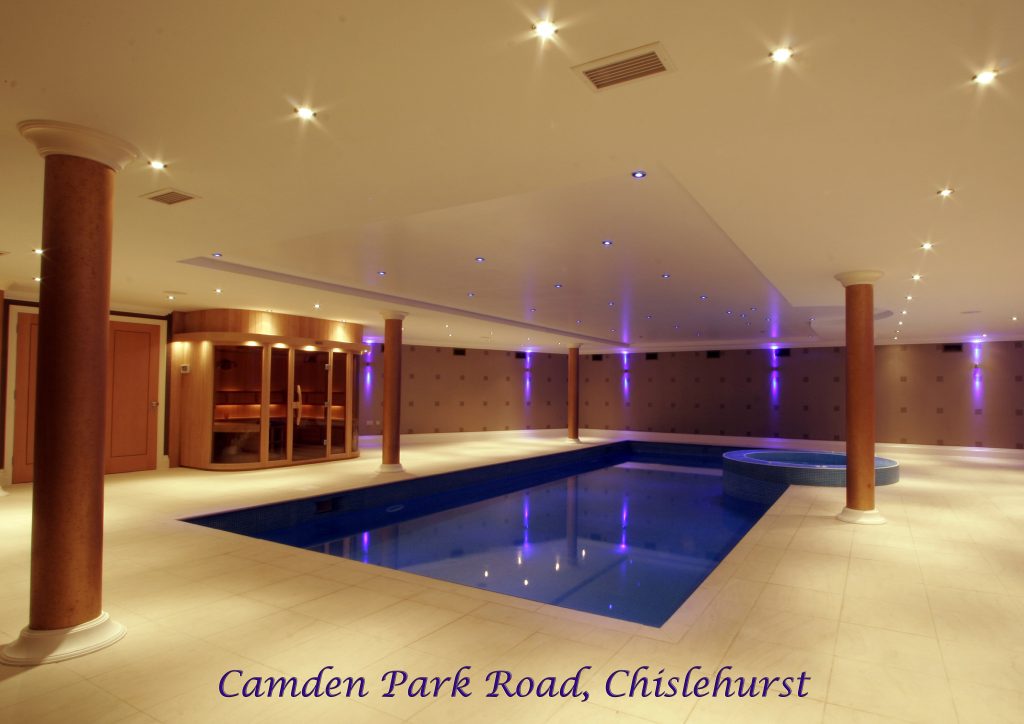
Materials of construction are of little interest to the end user, but the architect and main contractor will be keen to run through the different options available and the merits in terms of cost, convenience, speed of construction and strength. Aqualia can provide a full range of options where others are building the shell and full details of our own preferred methods.
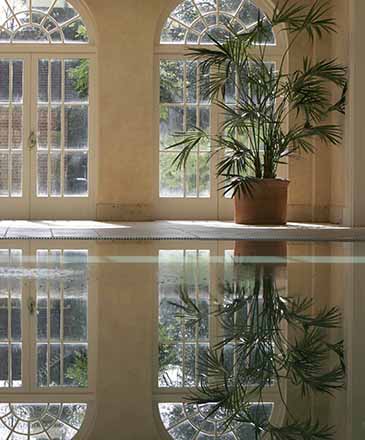
Materials of decoration are very much of interest to the owner / end user and Aqualia have an impressive range of ideas and samples for you to select from. Alternatively let us and your internal designer create the perfect match for the leisure space. From large format natural stone and porcelain, through to ceramic and glass mosaics from 50mm square down to 6mm square. We have classic blue blends through to exotic gold leaf. Iridescent coatings and back foiled glass. The choice is impressive and with a matching range of grouts and surround tiles your room will be dressed to impress!